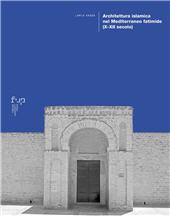Architettura islamica nel Mediterraneo fatimide (X-XII secolo)
158 p. : ill.
Includes bibliographical references.
Nonostante un'origine piuttosto conflittuale e una genealogia controversa, i Fatimidi furono una delle dinastie più promettenti e fiorenti dell'Islam. Il loro regno durato due secoli, dal 969 al 1171, rappresenta un periodo significativo nella storia del Mediterraneo medievale. La dinastia intraprese i primi passi in Ifriqiya, attuale Tunisia, e da lì estesero il loro dominio in tutto il Nord Africa fino alla presa dell'Egitto. La Sicilia, conquistata dai musulmani nel IX secolo, cadde anch'essa sotto il dominio fatimide fino al 1091, data della conquista normanna dell'isola. In questo contesto storico, il libro cerca di far luce sui principali accadimenti a partire dalle architetture costruite nel Nord Africa e dagli scambi culturali tra le due rive del Mediterraneo. [Testo dell'editore]
Despite a rather conflicted origin and a controversial genealogy, the Fatimids were one of the most promising and flourishing dynasties in Islam. Their two-century reign, from 969 to 1171, represents a significant period in the history of the medieval Mediterranean. The dynasty took its first steps in Ifriqiya, present-day Tunisia, and from there extended their rule throughout North Africa until the capture of Egypt. Sicily, conquered by the Muslims in the 9th century, also fell under Fatimid rule until 1091, the date of the Norman conquest of the island. In this historical context, the book attempts to shed light on the main events starting with the architecture built in North Africa and the cultural exchanges between the two shores of the Mediterranean. [Publisher's text]
-
Información
ISBN: 9791221502282
COLECCIÓN
MATERIAS


